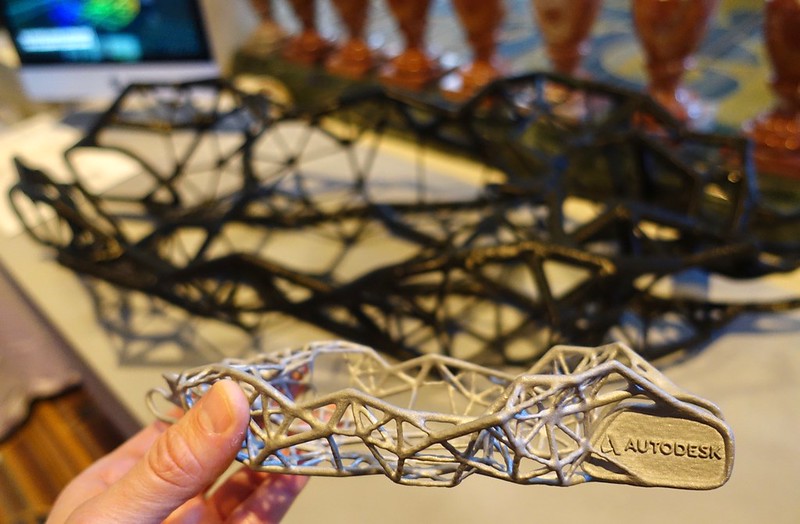Generative design
Contents |
[edit] Introduction
Generative design (or algorithmic design) is a design technique that takes a predetermined concept and quickly applies repetition to generate numerous possible solutions. Akin to traditional methods such as brainstorming or ‘napkin doodling’, generative design does not necessarily require technology, but in recent years, computers have often been used to speed the application of algorithms and refine the process.
[edit] History
Generative design is not a new theory. Its origins are not clearly documented, but it has been used since the 1970s as a way to approach complex design situations.
The demand for innovative solutions to design challenges has accelerated its adoption in architecture and construction. Improvements in affordable technology have also contributed to the growth of this design approach that can explore numerous possibilities in a relatively short period of time.
[edit] How generative design works
Generative design typically uses computer aided design (CAD) software to build on a basic concept and output a stream of (possibly unconventional) alternatives. The designer then inputs predetermined requirements and parameters into the program to improve the set of possible results and generate different designs more in line with feasible approaches. These results are then evaluated in a way that allows the designer to discard concepts that don’t work and generate an optimal solution.
The process includes the following steps:
- Generation.
- Analysis.
- Evaluation.
- Evolution.
- Exploration.
- Adoption.
With CAD-based version of generative design, the application of algorithms is automated, but it is up to the designer to evaluate the computer generated results and decide on the most precise option.
[edit] Related articles on Designing Buildings Wiki
Featured articles and news
British Architectural Sculpture 1851-1951
A rich heritage of decorative and figurative sculpture. Book review.
A programme to tackle the lack of diversity.
Independent Building Control review panel
Five members of the newly established, Grenfell Tower Inquiry recommended, panel appointed.
Welsh Recharging Electrical Skills Charter progresses
ECA progressing on the ‘asks’ of the Recharging Electrical Skills Charter at the Senedd in Wales.
A brief history from 1890s to 2020s.
CIOB and CORBON combine forces
To elevate professional standards in Nigeria’s construction industry.
Amendment to the GB Energy Bill welcomed by ECA
Move prevents nationally-owned energy company from investing in solar panels produced by modern slavery.
Gregor Harvie argues that AI is state-sanctioned theft of IP.
Heat pumps, vehicle chargers and heating appliances must be sold with smart functionality.
Experimental AI housing target help for councils
Experimental AI could help councils meet housing targets by digitising records.
New-style degrees set for reformed ARB accreditation
Following the ARB Tomorrow's Architects competency outcomes for Architects.
BSRIA Occupant Wellbeing survey BOW
Occupant satisfaction and wellbeing tool inc. physical environment, indoor facilities, functionality and accessibility.
Preserving, waterproofing and decorating buildings.




















